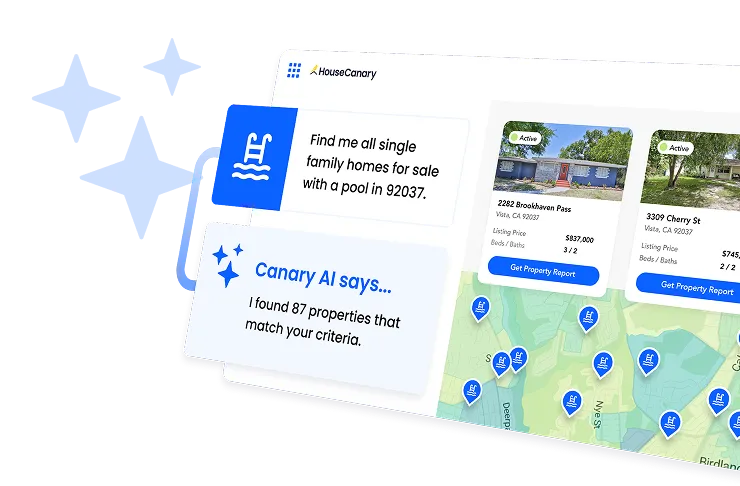
By Julian Hebron, The Basis Point
The first quarter of 2023 was wild. Mortgage rates rose and fell sharply as the Fed fought both inflation and bank contagion; fintech continued its 2022 retrenchment; lenders had a fourth straight quarter of cost and profit strain; housing inventory remained scarce; and home sales broke a year-long losing streak. There are opportunities in volatility like this, and lenders certainly have the stomach for it. So, will 2Q23 volatility be net favorable for our housing, lending, and fintech ecosystem? To answer, here are 10 market themes and lender opportunities to consider.
1. Inflation Peak Reached
The Fed’s preferred Core PCE inflation measure never got higher than 5.2%, and this level was reached twice, in March 2022 and September 2022. Headlines exclude this because they focus on CPI Inflation. But even Core CPI peaked 7 months ago at 5.9% (now 5.6%), and headline CPI peaked 10 months ago at 8.9% (now 4.9%). We begin 2Q23 with mortgage rates down 0.25% after the latest Core PCE (released last day of 1Q23) dropped to 4.6%. The Fed medicine tastes bitter, but it’s working. The opportunity for lenders now is to make your own headlines for customers about these inflation peak and lower rate facts. See items 9 and 10 below.
2. Fed Pause Imminent
Unemployment has been holding near 5 decade lows of 3.5%, but to start 2Q23, we saw job openings drop below 10 million for the first time in 21 months. This is an important signal the inflation fight is working. But the Fed has two jobs: maintain price stability and maximum employment. They’re aware that cooling inflation may cool the job market, and as such, they will likely pause rate hikes soon. Maybe at their May 3 policy meeting and definitely more likely by their June 14 meeting. The opportunity for lenders is rates will drop as mortgage bonds rally ahead of a Fed pause. Right now is the time to educate your realtors on these Fed and bond market basics.
3. Recessions Help Rates
Speaking of Fed and bond market basics, rates will also drop as mortgage bonds rally ahead of any expected recession. If your borrowers or realtors think the Fed has gone too far, this is the perfect opportunity to remind them of this counterintuitive benefit of a less hot economy. But you must manage expectations here. It’s not realistic for rates to get back to 3% or even 4%. Rates at that level imply severe recession, and barring another exogenous event on the level of the pandemic, this severity looks unlikely. Credit quality in the financial system is strong, and any coming recession would hopefully be medium to mild, resulting from the Fed’s imperfect path back to its dual mandate targets.
4. Bank Contagion 2.0?
In addition to balancing its dual mandate, the Fed also must balance inflation fighting with bank impact. The March bank crisis caught fire when Silicon Valley Bank (SVB) failed. To recap, SVB invested heavily in long-term government bonds. As the Fed hiked short rates 9 times in the past year to fight inflation, those bonds sold off (because long bond investors hate inflation), leaving SVB short on capital. Depositors panicked, and it became the second biggest bank failure in history. The opportunity for some banks and lenders is they get new deposits and loans as customers leave other banks and lenders. But select bank balance sheet issues for now don’t appear to be a contagion issue on the level of 2008 credit contagion resulting from bad assets.
5. Buyer Rate Threshold
The rate peak was 7.375% in late-October 2022 and we’ve touched 7% a couple times since then, but each time rates approach 6%, the MBA reports purchase applications rising notably. With 2Q23 starting with rates near this key homebuyer activity threshold, the opportunity for your buyers and realtors is right now.
6. Seller Rate Threshold
As for reluctant sellers with rates between 3% and 4%, the threshold is yet to be determined, but here are a few opportunity notes:
- First, rates in the 5% range may prove more palatable to sellers in the same way rates near 6% have induced buyers toward more activity. Especially when you educate them on the notes in item 3 above: economic conditions make 3% and 4% rate ranges less realistic.
- Second, sellers have record tappable equity of $9.3 trillion as of February, per Black Knight. This is up $3.11 trillion from January 2020. The average mortgage could use their $178K in tappable equity to buy a new home and still have 20% equity on their existing home. Or they could sell to fund a large down payment on a new home that hits affordability.
- Third, life events will cause sellers to move.
In all cases, you can use tools like ComeHome by HouseCanary to engage your homeowners with real-time, accurate, actionable home values.
7. Buyer Affordability Window
Right now, the median existing and new home prices are $363,000 (NAR) and $438,200 (Census/HUD), respectively. Using a 43% debt-to-income ratio target with 3% down on these prices, and assuming (higher than today) 6.5% rates and $600 in non-housing debt, borrowers qualify for these purchase prices making $97k and $113k, respectively.
Here’s why the opportunity to engage customers on these prices and rates is now. These lower prices came after a year of slowing sales. Millions can afford these prices, and home prices will rise again as rates drop. This is especially true if inventory remains slim, and purchase applications continue rising as we get to 6% rates (and below).
8. Tech Stack Consolidation
The lender fintech sector is strained. To end 1Q23, one A-list fintech venture capitalist publicly advised startups that company valuations should be calculated based on the present value of future cash flows. This is more how long-term value investors talk, and a far cry from more than a decade of revenue-growth-trumps-profitability advice from the VC community. This means all but the best fintechs who support mortgage will have trouble getting funding, and mortgage fintech consolidation will continue. For leaders of key fintech categories, this is the opportunity to beat or cheaply buy competitors. And for lenders, it’s an opportunity to consolidate your partners.
9. Top Tech Priorities for Lenders
In the lender tech stack, 2023 top priorities are loan manufacturing (LOS, PPE, POS), and marketing/engagement. Lenders that The Basis Point talks to say it’s a very tough time to add or change complicated loan manufacturing systems because they’ve had to cut so much, they don’t have resources for scale projects. The opportunity is therefore to enhance marketing with light impactful systems that can bring in new deals, and keep existing customers engaged.
10. Valuation & Customer Engagement
When it comes to the Customer Engagement Platform category, the special sauce ComeHome by HouseCanary has is valuation. HouseCanary is the valuation machine many of the biggest Wall Street players use to analyze collateral when buying loans and homes in America. So, when your buyers or owners are using ComeHome, it’s powered by this valuation platform.
The opportunity: actionable valuations for you, and true consumer-grade user experience to keep your home buying and owning customers engaged with the data they care about most.
This is what wins in this wild market. Talk to HouseCanary about how ComeHome works fast, and talk to The Basis Point about optimizing your tech stack for this market.














.jpeg)








